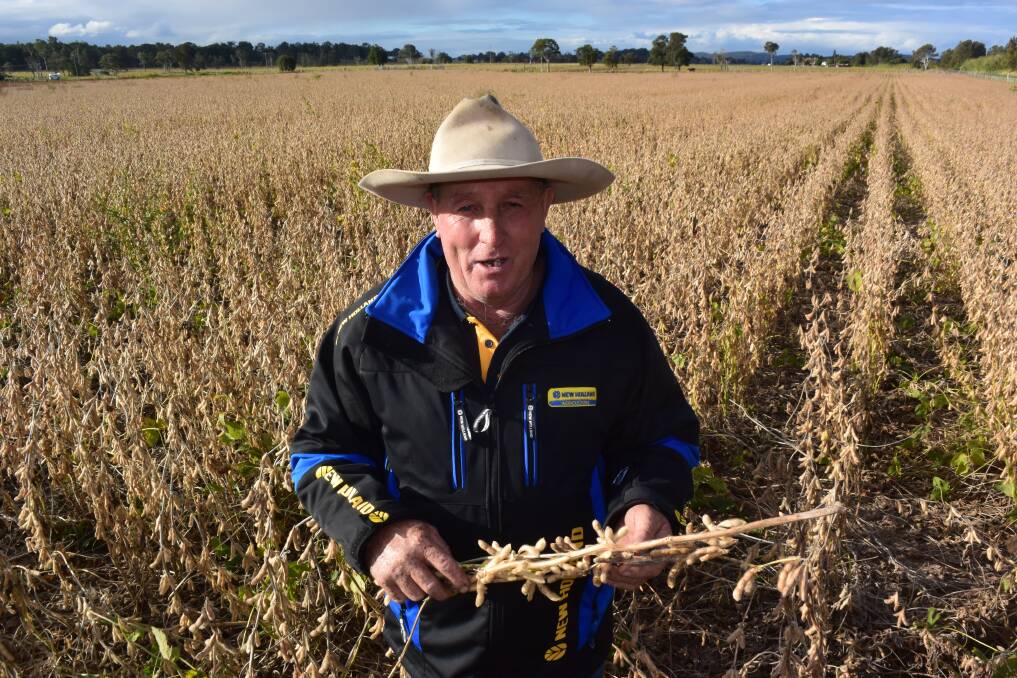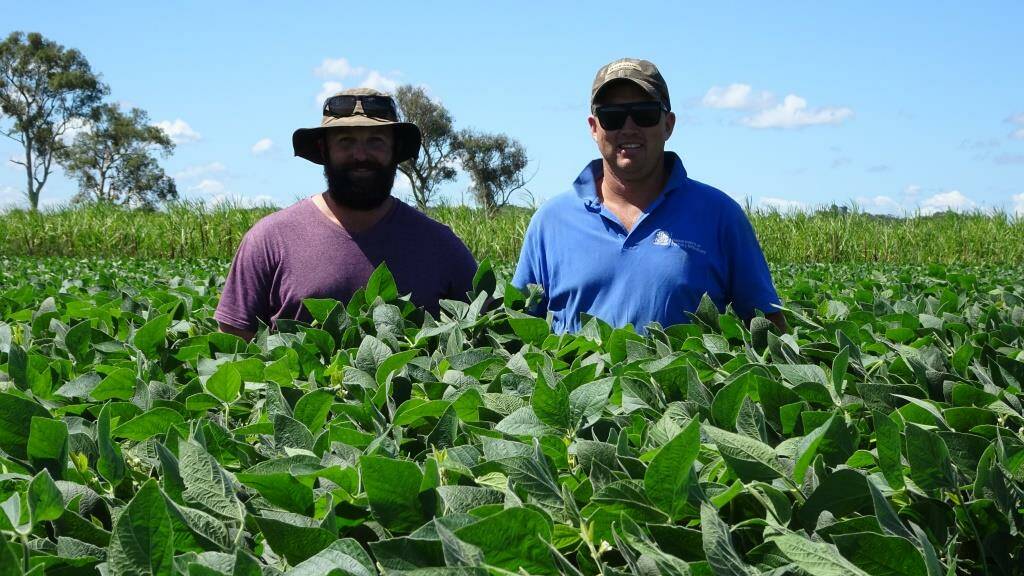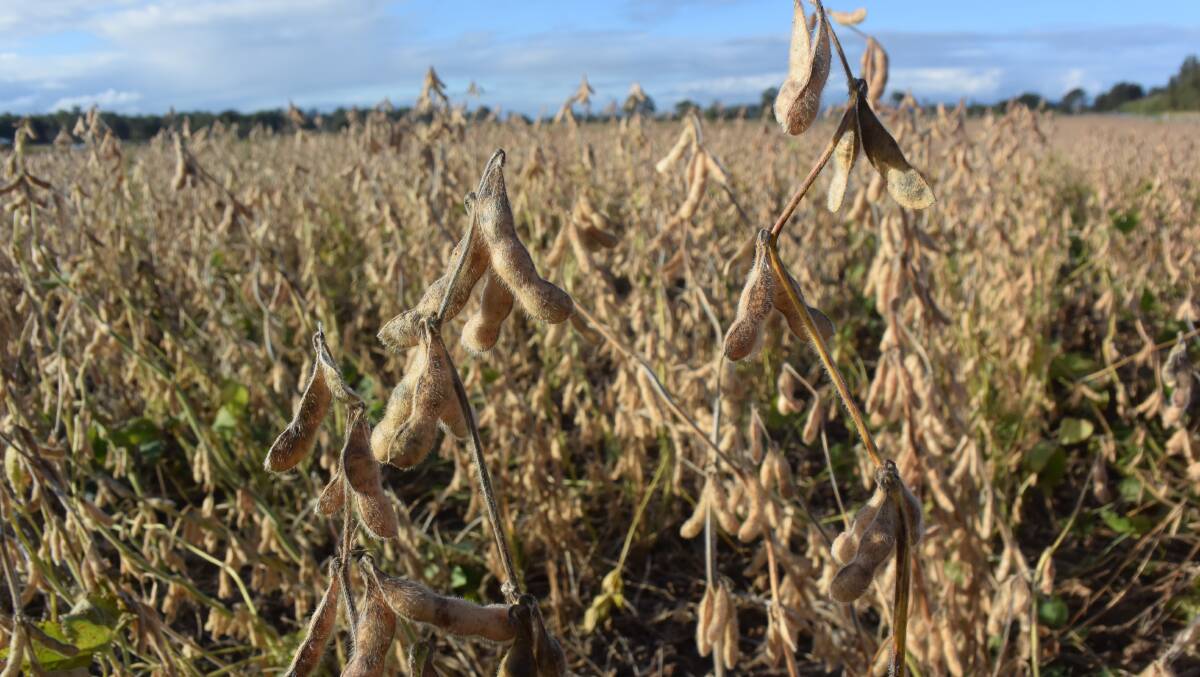
The new soybean variety ‘Hayman’ is proving itself as a multi-purpose option this season with success as silage and grain crops in the high rainfall zone of north eastern NSW.
Grain yields have topped at five tonnes to the hectare during the 2018 harvest season and when combined with high prices has resulted in a bumper year for north coast soybean producers.
The variety Hayman was released in 2013 by the Australian Soybean Breeding Program which is jointly funded by GRDC, CSIRO and NSW DPI. The new variety, selected by Dr Natalie Moore has been put through its paces at the Department of Primary Industry’s Grafton research station at Trenayr.
DPI researcher Nathan Ensbey says this variety has gained a foothold on the coast during the last couple of seasons.

“It always takes a while for a new variety to find its place in our farming systems,” he explained. Hayman was originally thought to be a late season variety, only planted from January onwards, but this season growers have tried planting it in mid-December with terrific results.”
Hayman’s grain qualities include, a clear hilum, high protein and a large seed size, making it attractive for tofu processors.
At Lawrence, on the Lower Clarence, Bruce Green has just harvested a “blockbuster” crop of Hayman.
“A lot of us are now talking about planting more of the Hayman variety,” he said. “At 5t/ha this is the best ever soybean crop for me. With the current high prices of $670 a tonne, this has been a block buster season.”
According to Mr Ensbey growers are taking a lot more pride in their soybeans crops with the ability for quality crops to make the high grade edible markets. “In the past, soybeans have been viewed as a low value fallow crop. With recent variety improvements and improved agronomic practices, growers have been able to target the more profitable human consumption market.”

Mr Green’s plant preparation included soil testing followed by lime at 2.5t/Ha with a legume fertiliser mix.
“Not all years are the same, we can lose the crop in a flood year, but we still get the benefit of the fallow crop and the nitrogen it puts back in our soil,” Mr Green said. “After a crop of soybeans the ground crumbles. It is so much better to work.”
But this season was one of the best with enough rain and no flooding. “I’ve never seen the paddock better,” he said. “For sugar there hasn’t been quite enough rain but the beans have loved it."
Bruce’s son Jackson also had great results with Hayman but this time as a silage crop, planting in October and baling just after flowering in late December. He achieved 56 large round bales off just under 2ha as Hayman produces 25% more biomass than other soy varieties and up to 11t/ha dry matter.


